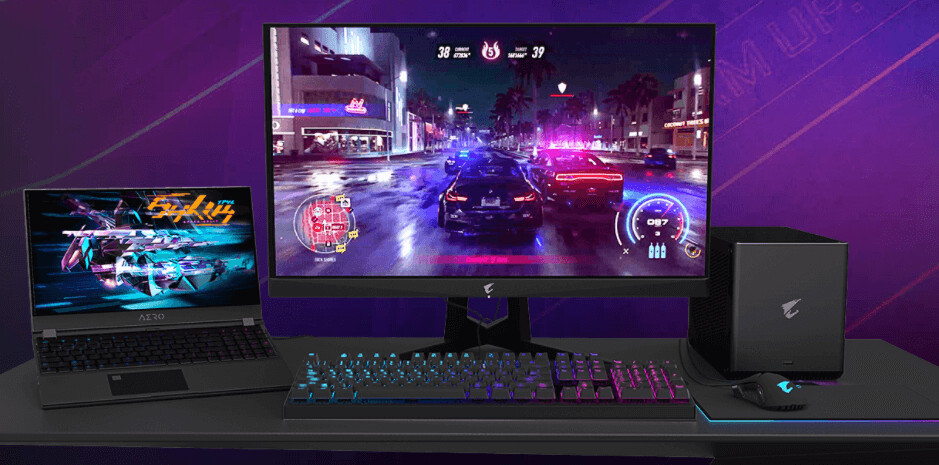- Joined
- Dec 26, 2019
- Messages
- 33 (0.02/day)
Hi,
I'm considering buying an eGPU to give me some flexibility with my "new" 2nd hand 27" iMac 2019.
Can anyone point me to a good overall review/discussion of eGPU's in general?
I'd like to be able to compare various eGPU against each other in terms of performance benchmarks.
I see an eGPU as a way to squeeze a bit more performance/life out of an older & inherently lower cost system.
This is perhaps the wrong audience to ask, because TPU is slanted heavily towards gaming, and Mac's have never tried to be good at aiming.
But the MAC ARM's are probably going to shake the tree there.
Just looking at the Sonnet eGPU so far, I see that their critical specs seem to be:
(1) Connection to Computer: Thunderbolt (3 or 4), or else USB-C
(2) Graphics Co-Processor:
AMD Radeon RX Vega 64 (Sonnet eGPU Breakaway Box 750)
or
AMD FirePro 2270 (Sonnet eGPU Breakaway Box 550): legacy product
(3) Dedicated power-supply with cooling fans: support 375W cards
(4) Various addtional outputs (varies from model to model):
Thunderbolt output (for daisychaining)
USB
HDMI (not Sonnet but other eGPU)
Ethernet
Extra power (>=80W)
(5) GPU compatibility:
Size: max physical size of GPU that can fit inside
Power: extra 8-pin connectors
I've got a couple of questions:
(1) What does the Graphics Co-Processor do?
If you used a Sonnet eGPU in an iMac, and plugged in an extra monitor to the iMac Thunderbolt, do you actually use the co-processor?
(2) What's the bottleneck in an eGPU system?
This obviously depends on how it's used, but any ideas on how performance would vary if you used something lke a MacPro 2012 as your benchmark system?
And ran the same GPU internally vs in the eGPU?
Or else in a Desktop PC?
Let's say Windows 10, where the GPU was run in the internal PCe slot compared to in an eGPU?
(3) Performance/cost comparison:
It would be VERY interesting to compare one of the newest Intel Macs with an eGPU vs a "roughly equivalent" Mac ARM M1/M2 system.
This obviously becomes a bit subjective to select the Mac ARM system to run it against, but if you restricted to overall price of new ARM system to that of the Intel with eGPU plus GPU, I wonder how it would compare?
Ideally in an 27" iMac 2019 with an intel 3.6 GHz i9-9900K 8 core, with lots of RAM (64GB or 128GB) vs an M1/M2 ARM system (either MacBook Pro or iMac).
The cost of the new Mac ARM systems incease DRAMATICALLY once you start to increase from the base OEM model.
And once selected, you CANNOT change it: zero flexiblity.
But the iMac 2019 allows you to vary components by a considerable degree:
- RAM: up to 128 GB for a very reasonable cost of
- SSD: 1 or 2
- GPU: internal Radeon Pro Vega 56 with the addition of a VERY big range of GPU's in an eGPU
You can buy a used 1 year old 27" iMac 2019 in pristine condition for +/- USD $2,500 specced as follows:
Intel 3.6GHz i9-9900K 8 Core
RAM: 128GB
SSD: 2 x 2TB (PCIe and SATA)
Internal GPU: Radeon Pro Vega 56
Monitor: 27" 5K Retina
eGPU: Sonnet with something like AMD Radeon RX 6800 XT or equivalent
New ARM Mac:
(a) MacBook Pro 13" for USD 2,500
M2 8-core CPU, 10 Core GPU
RAM: 24 GB
SSD: 2 TB
(b) Mac M1 Max Studio with Studio Display for USD 5,200
M1 Max: 10-Core, 24-Core GPU
RAM: 64 GB
SSD: 4 TB
You can obviously go between Option A and B considerably by buying a cheaper 3rd party display: the Studo Display is $1,600
And buy less RAM (32 GB) and less internal SSD (2TB).
That would give something like:
(C) Mac M1 Max Studio with good quality Samsung for USD $3,500
M1 Max: 10-Core, 24-Core GPU
RAM: 32 GB
SSD: 2 TB
I'm curious what the various benchmarks would be:
Synthetic: GeekBench 5 etc.
Standard gaming ones
Video processing/technical computing: Final Cut Pro, Matlab, Ansys etc.
Thanks,
Alan
I'm considering buying an eGPU to give me some flexibility with my "new" 2nd hand 27" iMac 2019.
Can anyone point me to a good overall review/discussion of eGPU's in general?
I'd like to be able to compare various eGPU against each other in terms of performance benchmarks.
I see an eGPU as a way to squeeze a bit more performance/life out of an older & inherently lower cost system.
This is perhaps the wrong audience to ask, because TPU is slanted heavily towards gaming, and Mac's have never tried to be good at aiming.
But the MAC ARM's are probably going to shake the tree there.
Just looking at the Sonnet eGPU so far, I see that their critical specs seem to be:
(1) Connection to Computer: Thunderbolt (3 or 4), or else USB-C
(2) Graphics Co-Processor:
AMD Radeon RX Vega 64 (Sonnet eGPU Breakaway Box 750)
or
AMD FirePro 2270 (Sonnet eGPU Breakaway Box 550): legacy product
(3) Dedicated power-supply with cooling fans: support 375W cards
(4) Various addtional outputs (varies from model to model):
Thunderbolt output (for daisychaining)
USB
HDMI (not Sonnet but other eGPU)
Ethernet
Extra power (>=80W)
(5) GPU compatibility:
Size: max physical size of GPU that can fit inside
Power: extra 8-pin connectors
I've got a couple of questions:
(1) What does the Graphics Co-Processor do?
If you used a Sonnet eGPU in an iMac, and plugged in an extra monitor to the iMac Thunderbolt, do you actually use the co-processor?
(2) What's the bottleneck in an eGPU system?
This obviously depends on how it's used, but any ideas on how performance would vary if you used something lke a MacPro 2012 as your benchmark system?
And ran the same GPU internally vs in the eGPU?
Or else in a Desktop PC?
Let's say Windows 10, where the GPU was run in the internal PCe slot compared to in an eGPU?
(3) Performance/cost comparison:
It would be VERY interesting to compare one of the newest Intel Macs with an eGPU vs a "roughly equivalent" Mac ARM M1/M2 system.
This obviously becomes a bit subjective to select the Mac ARM system to run it against, but if you restricted to overall price of new ARM system to that of the Intel with eGPU plus GPU, I wonder how it would compare?
Ideally in an 27" iMac 2019 with an intel 3.6 GHz i9-9900K 8 core, with lots of RAM (64GB or 128GB) vs an M1/M2 ARM system (either MacBook Pro or iMac).
The cost of the new Mac ARM systems incease DRAMATICALLY once you start to increase from the base OEM model.
And once selected, you CANNOT change it: zero flexiblity.
But the iMac 2019 allows you to vary components by a considerable degree:
- RAM: up to 128 GB for a very reasonable cost of
- SSD: 1 or 2
- GPU: internal Radeon Pro Vega 56 with the addition of a VERY big range of GPU's in an eGPU
You can buy a used 1 year old 27" iMac 2019 in pristine condition for +/- USD $2,500 specced as follows:
Intel 3.6GHz i9-9900K 8 Core
RAM: 128GB
SSD: 2 x 2TB (PCIe and SATA)
Internal GPU: Radeon Pro Vega 56
Monitor: 27" 5K Retina
eGPU: Sonnet with something like AMD Radeon RX 6800 XT or equivalent
New ARM Mac:
(a) MacBook Pro 13" for USD 2,500
M2 8-core CPU, 10 Core GPU
RAM: 24 GB
SSD: 2 TB
(b) Mac M1 Max Studio with Studio Display for USD 5,200
M1 Max: 10-Core, 24-Core GPU
RAM: 64 GB
SSD: 4 TB
You can obviously go between Option A and B considerably by buying a cheaper 3rd party display: the Studo Display is $1,600
And buy less RAM (32 GB) and less internal SSD (2TB).
That would give something like:
(C) Mac M1 Max Studio with good quality Samsung for USD $3,500
M1 Max: 10-Core, 24-Core GPU
RAM: 32 GB
SSD: 2 TB
I'm curious what the various benchmarks would be:
Synthetic: GeekBench 5 etc.
Standard gaming ones
Video processing/technical computing: Final Cut Pro, Matlab, Ansys etc.
Thanks,
Alan





